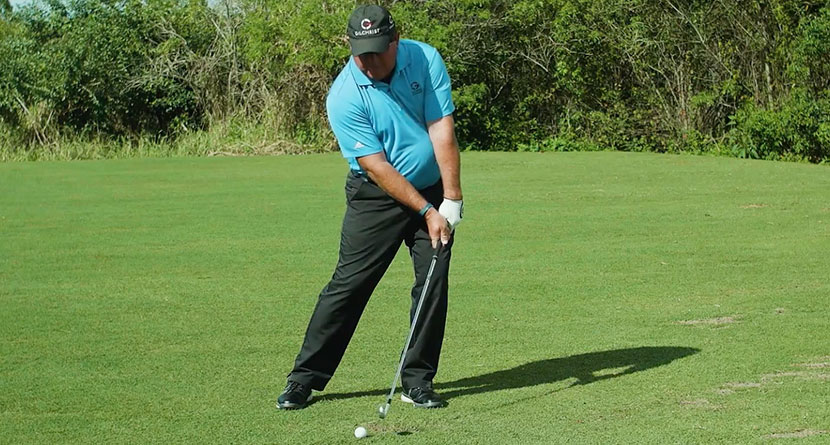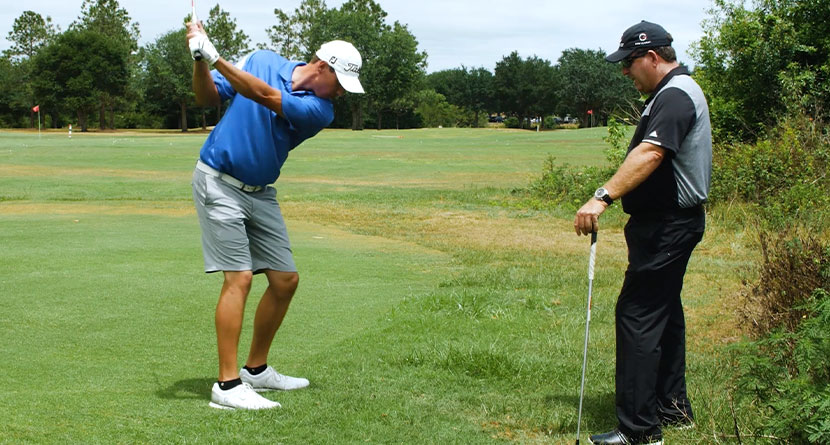Charles Howell III waited 11 years in between wins, and like many times before, it looked like he was going to come up a shot or two behind on Sunday at the RSM Classic.
After starting his final round 3-over par through two, Howell noted, “The way I started today, I just honestly thought I shot myself in the foot again. I thought that was pretty much over. I had seen this movie before.”
All golfers can relate, and so many students come back to us after a weekend round sharing the same type of experience — they had a great round going, but something derailed it and all was lost.
On the par-4 9th hole, Howell faced a buried lie in the bunker with his round and the tournament in the balance. This shot is awesome because this is the exact type of lie that ends so many victory charges or turns great rounds into days we don’t want to remember.
Sure, it was a par, but pars at the right time during a final round feel like birdies, keeping his momentum alive.
There are some key lessons to take from Howell III’s sand save, and the first is to find something positive about the shot you are facing. Charles actually got lucky with the unlucky lie.
That’s right. The ball plugged high enough in the bunker’s face where he was able to build a stance with one foot anchored out of the bunker on solid turf. Also working in his favor was the sloping terrain working towards the hole. These positives meant all he needed to do was move the ball a few feet and let the ground do the rest — perfect for a shot that produces little spin and minimal directional control.
For the mechanics of the shot, the key is taking your most lofted wedge — ideally a 60° or higher — and keeping the face square. Adjust your body lines slightly left of target because the impact with the sand will be violent and open the face slightly. If you face a severe slope in addition to a buried lie, focus on digging your back foot into the sand, anchoring your lower half and then using your knee flex to level out your hips and upper body with the slope.
The execution of the shot is the easiest and best part. Swing the club back far enough to allow for a powerful impact in the sand that will move the sand, and in turn, the ball out of the bunker. We caution against overswinging because students lose balance and have a difficult time hitting close the ball with the force required.
Keeping the backswing short and swinging aggressively directly behind and under the ball, you will bury the club perfectly. No follow through is required. In fact, watch Howell actually pull the club back to avoid the lip of the bunker — evidence that once the club hits the sand, the shot is essentially over.
The next time you catch an unlucky break in the sand, find a positive or two (even if it is something about trying a shot you haven’t before), build a solid stance, and bury the club behind the ball with the force required to hit a general landing area.













